
1. UN “High seas treaty” resume – Can the International Community finally forge an agreement?
Delegates from up to 193 UN member states will gather to start talks in New York on Monday to resume efforts to forge a long-awaited and elusive treaty to safeguard the world’s marine biodiversity. The ‘High Seas” are largely unregulated and this long-awaited treaty is critical to protect the world’s oceans from overfishing, pollution and other threats. The importance of this meeting is underscored by the wave of international news stories about this topic published this week.
The high seas – areas lying beyond countries’ exclusive economic zones – make up nearly two-thirds of the world’s oceans. A global agreement is seen as crucial to preserve and manage these waters and their biodiversity. “Humanity has been waging a senseless and self-defeating war on nature, and the ocean is on the front lines of the battle,” UN Secretary General Antonio Guterres said as he called on nations to conclude the delayed negotiations.
The goal of the UN meetings, ending March 3, is to produce a unified agreement for the conservation and sustainable use of those vast marine ecosystems. The talks, formally called the “Intergovernmental Conference on Marine Biodiversity of Areas Beyond National Jurisdiction,” resume negotiations suspended last fall without agreement on a final treaty.
The UN talks will focus on key questions, including: How should the boundaries of marine protected areas be drawn, and by whom? How should institutions assess the environmental impacts of commercial activities, such as shipping and mining? And who has the power to enforce rules?
Thank you for your generous gift that will help us continue the production of this weekly, free publication

2. Boho, Philippines authorities nurture 100 giant clams in effort to reseed local reefs with this depleted species
MANDAUE CITY, Cebu — The Bohol Provincial government through the Bohol Provincial Environment Management Office (BPEMO) is currently caring for 100 giant clams which they seeded on Oct. 19, 2022. The clams are located at the Sta. Fe Marine Sanctuary in Barangay Sta. Filomena in Alburquerque town.
In a social media post, BPEMO said that caring for these giant clams was part of their Giant Clams Restocking Project, which was one of the priority programs of the provincial government with the goal of protecting and conserving its marine resources, enhancing Bohol’s marine biodiversity, and providing an alternative source of income to the fisherfolks.
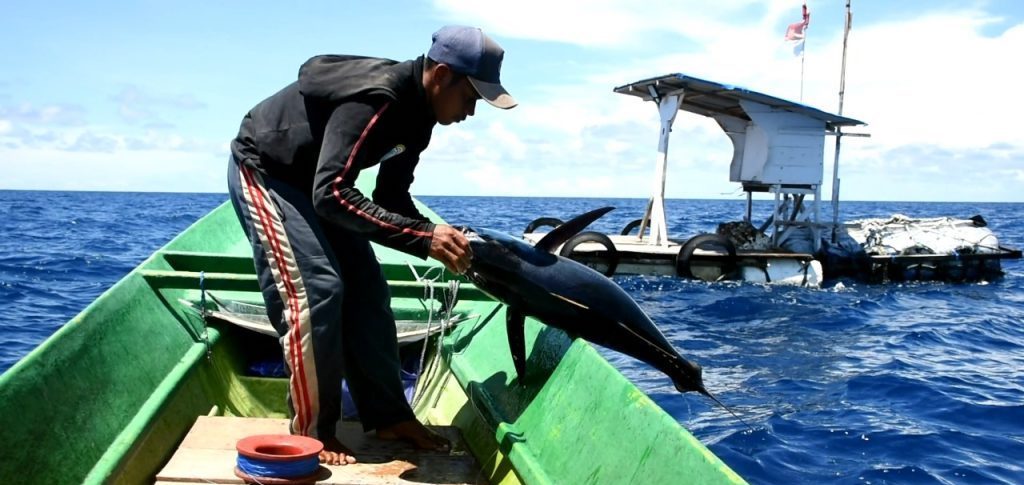
3. End of the tuna FAD? Indonesia hopes so, but EU isn’t giving up just yet
The Indonesian government welcomed a recent decision by fisheries regulators to curtail the use of controversial fish-aggregating devices, or FADs, which critics blame for a steep decline in Indian Ocean tuna stocks.
These concerns center on the use of FADs in general — large plastic buoys or floats that are tethered to the seafloor — and drifting FADs in particular, which aren’t tethered. Fish tend to school around floating objects at sea, so these devices make it easy for fishers to trawl them, including juvenile tuna and non-target species. Drifting FADs also contribute to the problem of marine plastic pollution, and can entangle sea mammals, turtles, and other species.
At a meeting earlier this month of the Indian Ocean Tuna Commission (IOTC), Kenya initiated a proposal to decrease the number of drifting FADs operating at the same time and to impose a three-month moratorium on the devices.
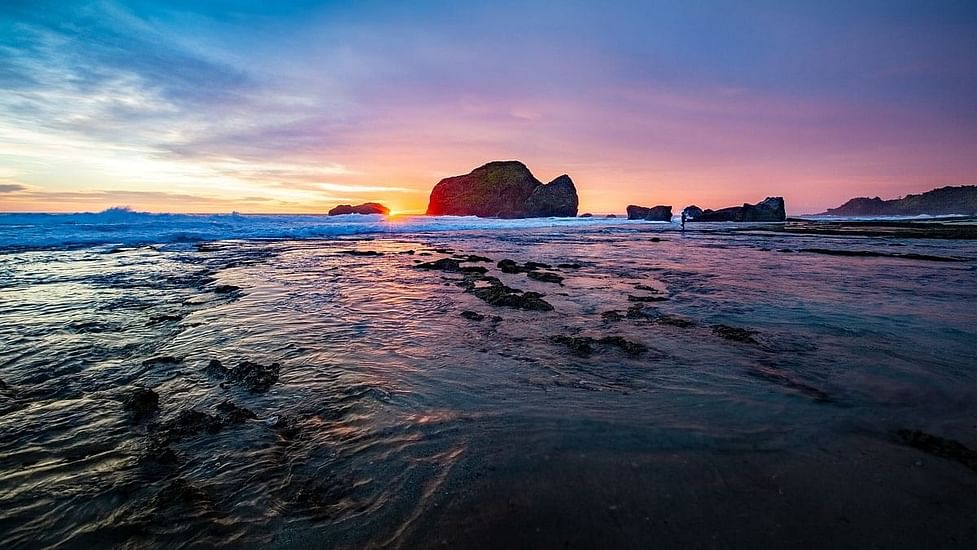
4. Tehran hosts workshop on Indian Ocean Marine Environment
The Indian Ocean Rim Association is an inter-governmental organization established in March 1997.
The effects of climate change on the environment of the Indian Ocean and the introduction of measures taken to reduce the effects of climate change are discussed during the three-day event. The aim of the workshop is to enhance the knowledge of Member States and share information on the impacts of climate change on the marine environment.
The specific objectives are to promote sharing knowledge and findings on the effects of climate change on various aspects of the marine environment and ecosystem. It also aims to enhance the capacities and skills of the Member States in sustainable management and conservation of marine biodiversity.
The event seeks to design an action plan to address the impacts of climate change on the marine environment and ecosystems, as well as its implications on food security.

5. New legislation aims to bolster the blue economy. Here’s how it will impact New Bedford, Massachusetts
Coastal lawmakers presented several pieces of legislation that would advance Massachusetts’ marine industries while also focusing on wildlife conservation and habitat protection.
The state’s blue economy entails a spectrum of jobs from fishermen to tech workers. It’s currently valued at $8.2 billion, between 2009 and 2019, Massachusetts’ blue economy grew by 38%.
The legislation was introduced with the support of the New England Aquarium, indicating a slightly new and involved role in state policy for the 54-year-old institution.
“Right now, the commonwealth is at a pivotal moment where the blue economy is projected to grow even further,” said Vikki Spruill, president/CEO of the Aquarium, at a press conference to unveil the legislative package. “But the growing industrialization of the ocean combined with the warming waters in the Gulf of Maine is threatening, and in some cases causing significant changes, to our coastal ecosystems.”
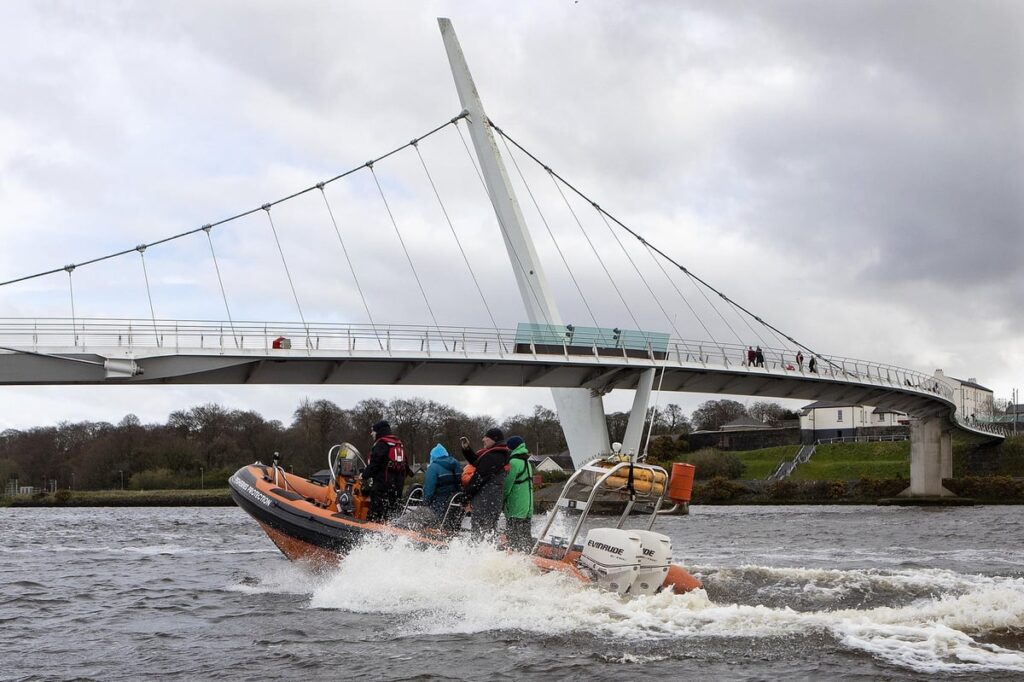
6. Innovative study tracked vulnerable specie of salmon, shark, whale, and seals along Donegal and Northern Island – Results to be discussed in London
Derry (Londonderry), Northern Ireland, The findings of an important marine research project that monitored basking sharks, skates, salmon, seals, whales, dolphins, and porpoises off the Derry and Donegal coasts are to be shared at a conference in the Guildhall this week.
The conference is the culmination of the €4.7m SeaMonitor project that between 2019 and December 2022 used innovative marine species tracking technology to better understand and protect vulnerable marine life in our oceans.
The project has utilized state-of-the-art acoustic telemetry equipment to track a range of marine species, including salmon, seals, basking sharks, cetaceans, and skate.
The two-day conference will provide a platform for the team to present their findings and highlight the importance of tracking these species for conservation and management purposes and will be attended by an international delegation of almost 100 marine scientists, academics, and political representatives
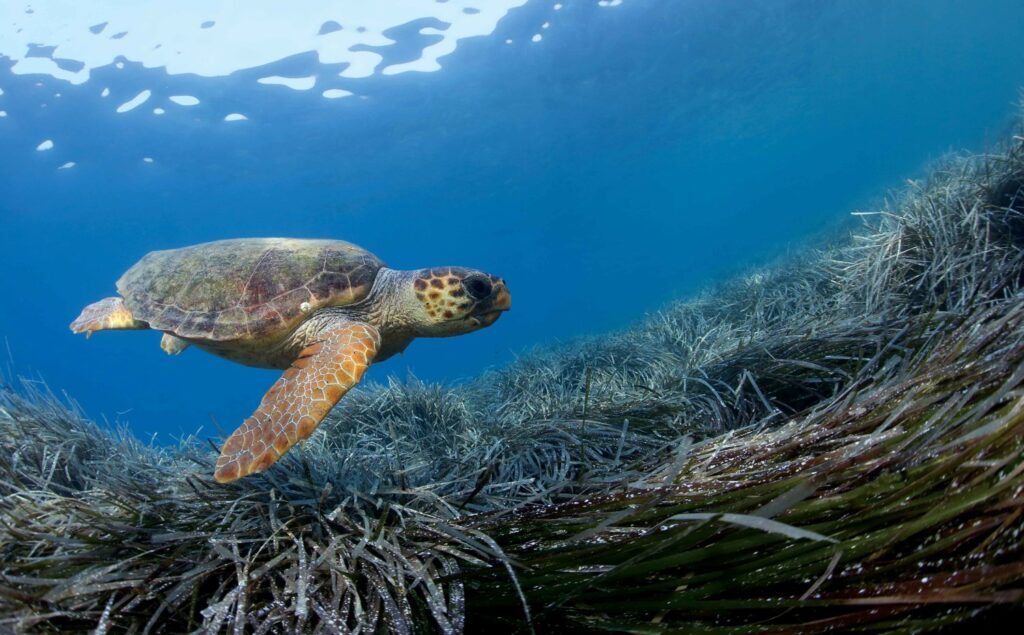
7. Environmental and pathological factors affecting hatching success of the northernmost loggerhead sea turtles
A study published this week in Nature shows that in recent years, the report of loggerhead sea turtle (Caretta caretta) Mediterranean nesting range has expanded together with new records of nests becoming northward on the Italian coastline of the Tyrrhenian and Adriatic seas.
These areas are characterized by intensive human activities, such as tourism, fishery, and marine traffic, all possibly involved in the influence of the use of coastal habitat by marine species. These anthropic threats, in addition to the natural ones and the changing environmental characteristics of the beach, may influence the growth of microorganisms causing hatching failures.
Climate change and anthropogenic impacts have been scored as one of the highest hazards to sea turtle health and could have played a role in the Sea Turtle Egg Fusariosis (STEF) development. Environmental changes, human activities, and emerging pathogens deserve the highest attention in terms of health research, and conservation management.

8. Sea urchin harvest initiative brings scientists, traditional owners and fishers together to help save kelp forests
It has been a creeping problem along the coastline of south-eastern Australia for decades, but a breakthrough may be on the way. Sea urchins, a native species in NSW, have exploded in numbers, grazing on healthy kelp forests until only an eerie moonscape remains. The urchin barrens already cover 50 percent of the NSW coast and as ocean temperatures rise, the urchins are now degrading coastal reefs in Victoria and Tasmania.
A new initiative is bringing together scientists, traditional owners, and commercial fishers to selectively harvest urchins from barren areas, while also encouraging a sustainable commercial urchin harvest.
The globally-significant reef supports some of the world’s most valuable fisheries — lobster and abalone — worth more than $10 billion annually to the nation’s economy. The loss of kelp forests has been devastating for marine biodiversity as the sea urchin’s predators/competitors decline and urchin numbers proliferate.
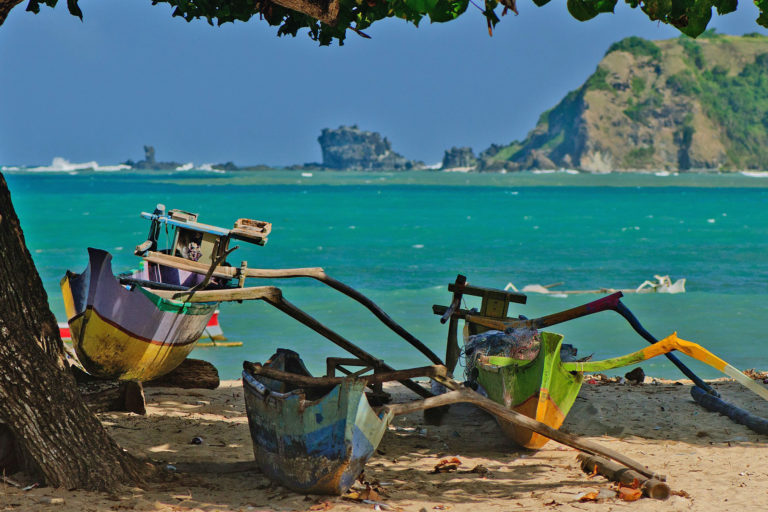
9. Lombok Island, Indonesia: Rising sea levels force fishers into different jobs
In 2009, Indonesian researchers published a report on the vulnerability to climate change of the eastern Indonesian island of Lombok, Their prediction, based on the International Panel on Climate Change Special Report on Emissions Scenarios projections, was that the sea level along the Lombok coast would rise 5-15 centimeters (2-6 inches) by 2020, and 13-35 cm (5-14 in) by 2050.
The former is roughly a loaf of sandwich bread, the latter a baguette stood on its head.
The numbers suggest a significant height increase, but they sound staid compared with the reality that is already playing out on the ground. The ocean is swallowing seaside towns. Fishers are abandoning their family trade, choosing instead to tame small patches of nearshore water with seaweed farms, if not retreat from the beach, and occasionally leaving the Indonesian archipelago completely for stable employment in the Middle East.

10. Paper excellence corporation contributes $100,000 to salmon restoration across B.C.
Paper Excellence Canada has donated $100,000 to the Pacific Salmon Foundation to boost efforts to conserve and restore Pacific salmon populations across B.C. The money will be distributed through grants in communities where Paper Excellence operates to help advance community-driven stewardship initiatives at local levels.
About half of the Pacific salmon populations are in a state of decline. Salmon encounter various challenges during a complex life cycle, including the effects of climate change, habitat loss, development, and more.
The Paper Excellence donation will support PSF’s Community Salmon Program, which awards hundreds of grants to grassroots salmon conservation projects across B.C. and the Yukon each year. Since PSF launched the program in 1989, it has engaged more than 300,000 volunteers to pursue local projects to restore salmon and rehabilitate habitats.

11. Florida rescue releases 12 manatees into the wild in one day
A Florida coalition of government agencies, wildlife rehabilitation groups, and conservation organizations released an “unprecedented” 12 manatees into the wild in a single day.
The Manatee Rescue and Rehabilitation Partnership announced on Tuesday that the 12 animals were released into Blue Spring State Park, one of the largest winter gathering sites for the species in Florida. Many of the manatees released were rescued as orphaned calves. All underwent rehabilitation at expert facilities to prepare for their return to the wild.
The manatees were outfitted with GPS tracking devices to “allow researchers to monitor manatee movement and ensure their acclimation to their natural habitat for the next year”. Data collected from the tracking devices will provide insight into how orphaned manatees adapt to the wild without the skills they would have learned from their mothers.
.

12. Yacht goes aground, spills fuel in Maui Marine Sanctuary
A charter yacht has gone aground in a protected bay on Maui, spilling an unknown quantity of fuel and drawing concern from local officials. The 94-foot yacht Nakoa is grounded on the north side of Maui’s Honolua Bay, a protected marine sanctuary area. The yacht released diesel into the water Tuesday when the bilge pumps activated, the owner told the AP.
The owner’s initial refloat attempt was not successful, and the U.S. Coast Guard took command of the response. The Coast Guard has selected a professional salvor, Sea Engineering, to remove the vessel and its fuel. The objective is to complete the project by Friday, according to the AP. Honolua Bay is part of a state-administered marine life conservation district, where fishing and removal of marine life are prohibited. It is home to large coral outcroppings, and it is a popular diving destination.
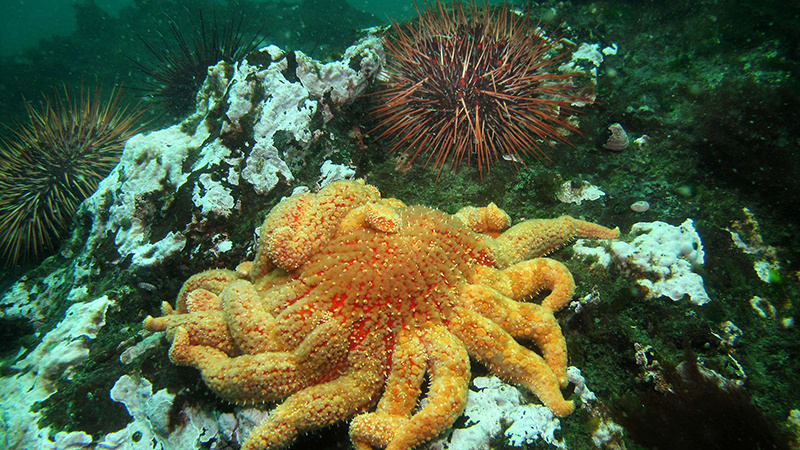
13. Study: Sunflower sea stars could help bring back kelp forests
Your average sunflower sea star can munch through almost five purple sea urchins in a week. That’s good news — and valuable data — for efforts to reintroduce these now-endangered predators to coastal ecosystems along the west coast of North America.
It suggests that if sunflower sea stars returned to their former habitats, they could help keep hungry urchin populations in check and possibly help restore kelp.
A team published the findings in Proceedings of the Royal Society B on Feb. 15. “We show, using the experiments and a population model, that these very large-scale purple sea urchin barrens probably couldn’t have developed in the presence of sunflower sea stars,” also known by the scientific name Pycnopodia helianthoides, Galloway said. “Our findings indicate that if Pycnopodia recovers, it should suppress these urchin barrens and help the kelp forest recover.”

14. ‘They’re everywhere out there’: Three new nautilus species described
The three species look similar, but there are differences between them in terms of genetic structure, shell size, and coloration. Each species is found in a different geographic location in the Indo-Pacific region: Fiji, American Samoa, and Vanuatu.
“These populations are isolated from each other because nautiluses can’t go deeper than 800 meters [2,600 feet],” conservation biologist Gregory Barord says. “So if there’s 1000 meter [3,300 ft of] water between two populations, the nautilus is not going to be able to survive that tract, because their shell will implode below 800 meters. We also know that warm surface water temperatures kill nautiluses, so they’re not going to be necessarily swimming at the surface, going from island to island.”
Barord says it’s important to learn as much as possible about nautiluses so it’s understood what needs to be done to help protect them.




